How to Build a Concrete Formwork: A Step-by-Step Guide
Mar 17, 2025Concrete structures refer to the provisional constructions or moldings in which concrete assumes a given shape. These are important since during pouring and curing, they prevent the concrete from collapsing or settling out of the expected shape and size. These are essential construction tools. Adequately set up forms make wall structures sound and also make finishing easy. This guide will show you how to build forms for architectural purposes using concrete.
Formwork is a worktext structure to hold the shape of wet concrete when it has been set. It may be permanent or temporary depending on the purpose. Concrete form must be sturdy, well-supported, and lined up perfectly for the quality of the end structure to be assured.
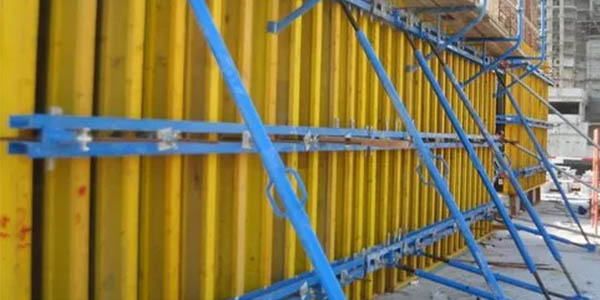
Materials: wooden formwork, steel formwork or aluminum formwork, support rod, tension bolts, release agent.
Tools: level, hammer, wrench, electric drill, scaffolding.
Inspection: Confirm the wall size, steel bar binding is completed, and clean the base.
Laying Out the Line:
According to the design drawings, pop up the edge of the wall on the ground or floor.
Check verticality and horizontality.
Install One Side of The Formwork:
Assemble the formwork according to the wall size and temporarily fix it with support rods.
Use a level to adjust the verticality.
Install Tension Bolts:
Reserve holes on the formwork and insert tension bolts to fix the formwork on both sides.
The bolt spacing is generally 50-80cm.
Install the Other Side of The Formwork:
Install the other side of the formwork in the same way and connect it with the tension bolts.
Adjust the template spacing to ensure that the wall thickness meets the design requirements.
Reinforce the Formwork:
Use diagonal and horizontal braces to reinforce the formwork to prevent deformation during pouring.
Check whether all connection points are firm.
Apply Release Agent:
Apply release agent on the inside of the formwork to facilitate demolding.
Acceptance:
Check the verticality, flatness and stability of the formwork.
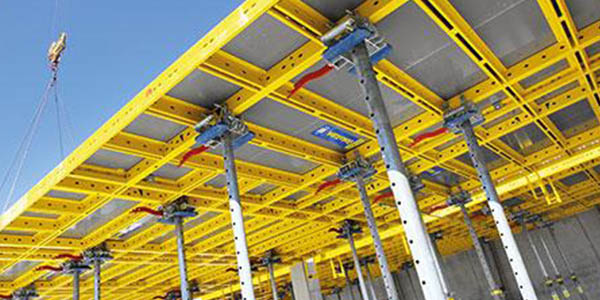
Materials: wooden formwork, steel formwork or aluminum formwork, support frame (steel pipe or aluminum alloy support), wooden square.
Tools: level, hammer, wrench, electric drill.
Inspection: Confirm the floor elevation and support point position.
Establish Support Frame:
Design the support frame spacing according to the floor load (usually 80-120cm).
Adjust the support frame height to the floor bottom elevation.
Install Primary and Ssecondary Keels:
Lay the primary keel (usually steel pipe or wooden square) on the support frame.
Lay the secondary keel (wooden square) on the primary keel, and the spacing is generally 20-30cm.
Lay the Formwork:
Lay the formwork on the secondary keel, and seal the joints with tape to prevent leakage.
The edge of the formwork is tightly connected to the wall or beam formwork.
Adjust the Elevation and Levelness:
Use a level to check the flatness of the floor formwork and adjust the support frame height.
Reinforce the Formwork:
Add support points under the formwork to ensure that it does not deform during pouring.
Apply Release Agent:
Apply release agent on the surface of the formwork.
Acceptance:
Check the flatness, support stability and tightness of the formwork.
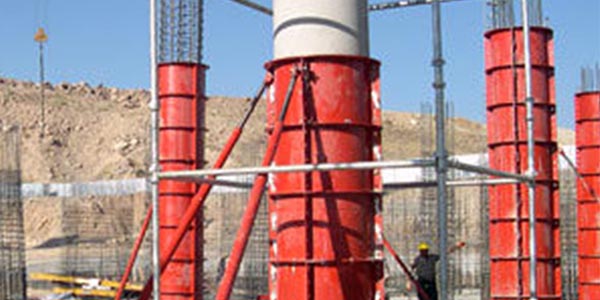
Materials: wooden formwork, steel formwork or aluminum formwork, tension bolts, support rods.
Tools: level, hammer, wrench, electric drill.
Inspection: Confirm the column size and reinforcement binding is completed.
Laying out and Positioning:
Pop up the edge line of the column according to the design drawing.
Installing the Formwork:
Assemble the formwork into the shape of the column and temporarily fix it with support rods.
Use a level to adjust the verticality.
Installing Tension Bolts:
Preserve holes on the formwork, insert tension bolts, and fix the formwork.
Reinforce the Formwork:
Use diagonal braces and horizontal braces to reinforce the formwork to prevent deformation during pouring.
Apply Release Agent:
Apply release agent on the inside of the formwork.
Acceptance:
Check the verticality, size and stability of the formwork.
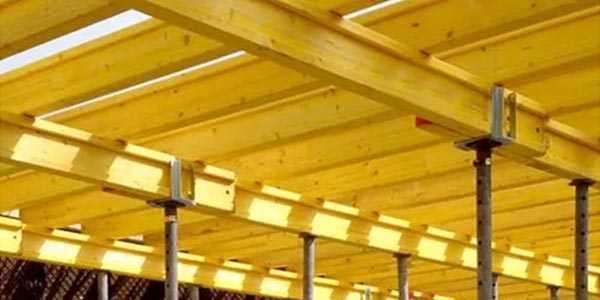
Materials: wooden formwork, steel formwork or aluminum formwork, support frame, wooden square.
Tools: level, hammer, wrench, electric drill.
Inspection: confirm the beam size and elevation.
Establish Support Frame:
Design the support frame spacing according to the beam load (usually 60-100cm).
Adjust the support frame height to the beam bottom elevation.
Install Bottom Formwork:
Lay the beam bottom formwork on the support frame and seal the joints with tape.
Install Side Formwork:
Install the beam side formwork and connect it tightly with the bottom formwork.
Fix the side formwork with tension bolts or support rods.
Reinforce the Formwork:
Add support points on the outside of the beam side formwork to ensure that it does not deform during pouring.
Apply Release Agent:
Apply release agent on the inside of the formwork.
Acceptance:
Check the size, elevation and stability of the formwork.
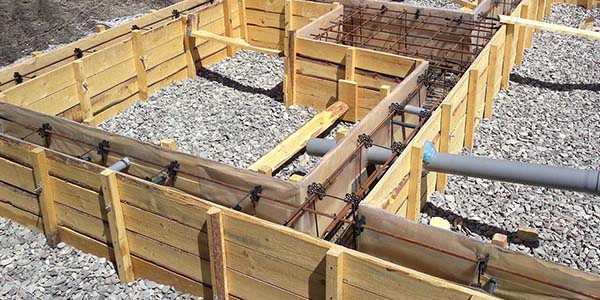
Wooden and steel formwork and the installation of supporting rods.
Tools: level, hammer, wrench, and electric drill.
Inspect the following: Check the dimensions and elevation of the foundation.
Construction design drawing layout and position:
Draw up the lines forming the pop-up foundation according to the drawing.
Apply the Formwork to the Foundation:
Formwork is set to foundation size and shape, which is further stabilized using support rods. Make elevation and level with a level.
Add Support Outside of The Formwork:
To prevent formwork from deforming while pouring in, add supporting points.
Spraying Release Agent:
Release agents should be sprayed on the inner surfaces of the formwork.
Acceptance:
The acceptance is carried out to check if size, elevation, and stability are satisfied by the formwork.
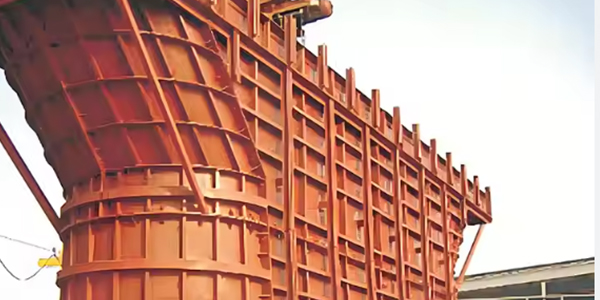
Materials: wooden formwork, plastic formwork or custom formwork, and support rods.
Tools: level, hammer, wrench, electric drill.
Inspection: Confirm the size and elevation of the special shape.
Steps of construction Laying out and positioning: Pop up the edge line of the special shape according to the design drawing.
Assemble the formwork into a special shape and temporarily fix it with support rods. Use a level to adjust elevation and evenness.
Formwork Reinforcement:
Put a support point on the outer side of the formwork so that it will not deform while pouring.
Release agent application: A release agent is applied to the inner side of the formwork.
Acceptance:
Check the size, elevation, and stability of the formwork. General precautions The formwork jointings must be tightly fitted to avoid any leakage.
Before pouring, check the stability, verticality, and levelness of the formwork.
Before removing the formwork, wait for the concrete to reach the design strength to avoid damage to the structure.
Learning how to build formwork shutting for concrete structures is an important part of imparting strength and durability to any concrete structure. Whether it be a concrete wall, slab, or any kind per se, by following the proper ways, construction can run smoothly and successfully.
AJ Building is a professional supplier of building materials. If you are looking for any types of concrete formwork or professional concrete formwork solutions, feel free to contact us for expert guidance and product recommendations.
What materials are commonly used for concrete forms?
The most common materials for concrete forms include:
Wood/plywood – affordable and easy to use, but less durable.
Steel – strong, reusable and provides a smooth surface.
Aluminum – lightweight and corrosion-resistant.
Plastic – durable, lightweight and easy to clean.
How do you ensure that the concrete form is strong and stable?
Use strong materials of the right thickness.
Reinforce with brackets and stakes.
Make sure the formwork is level and properly aligned.
Avoid gaps or weak joints to prevent leaks.
Secure all connections firmly to withstand the weight of wet concrete.
how to build concrete formwork —— diybasics.co.uk
How to Form Concrete Walls (with Pictures) —— wikiHow